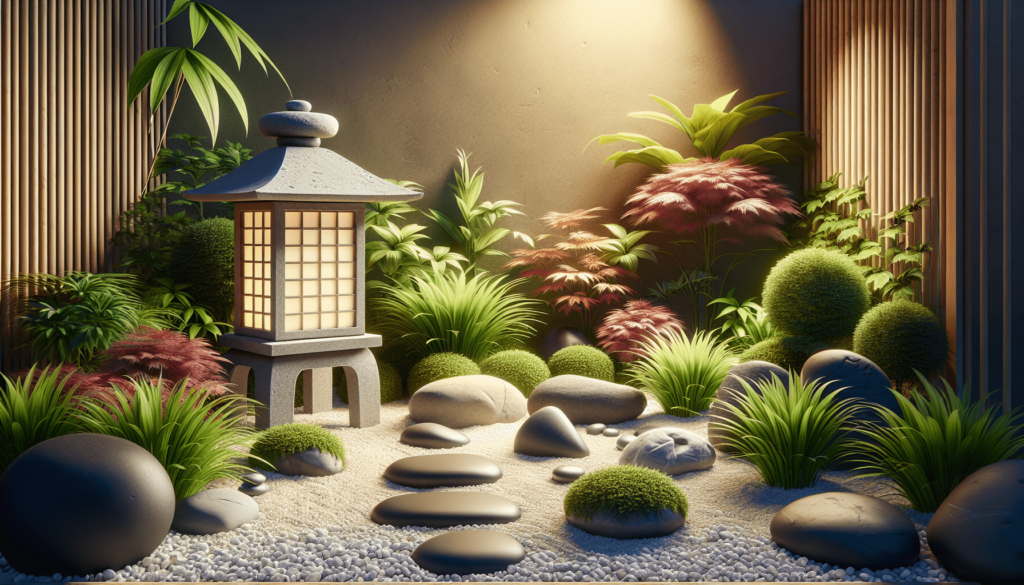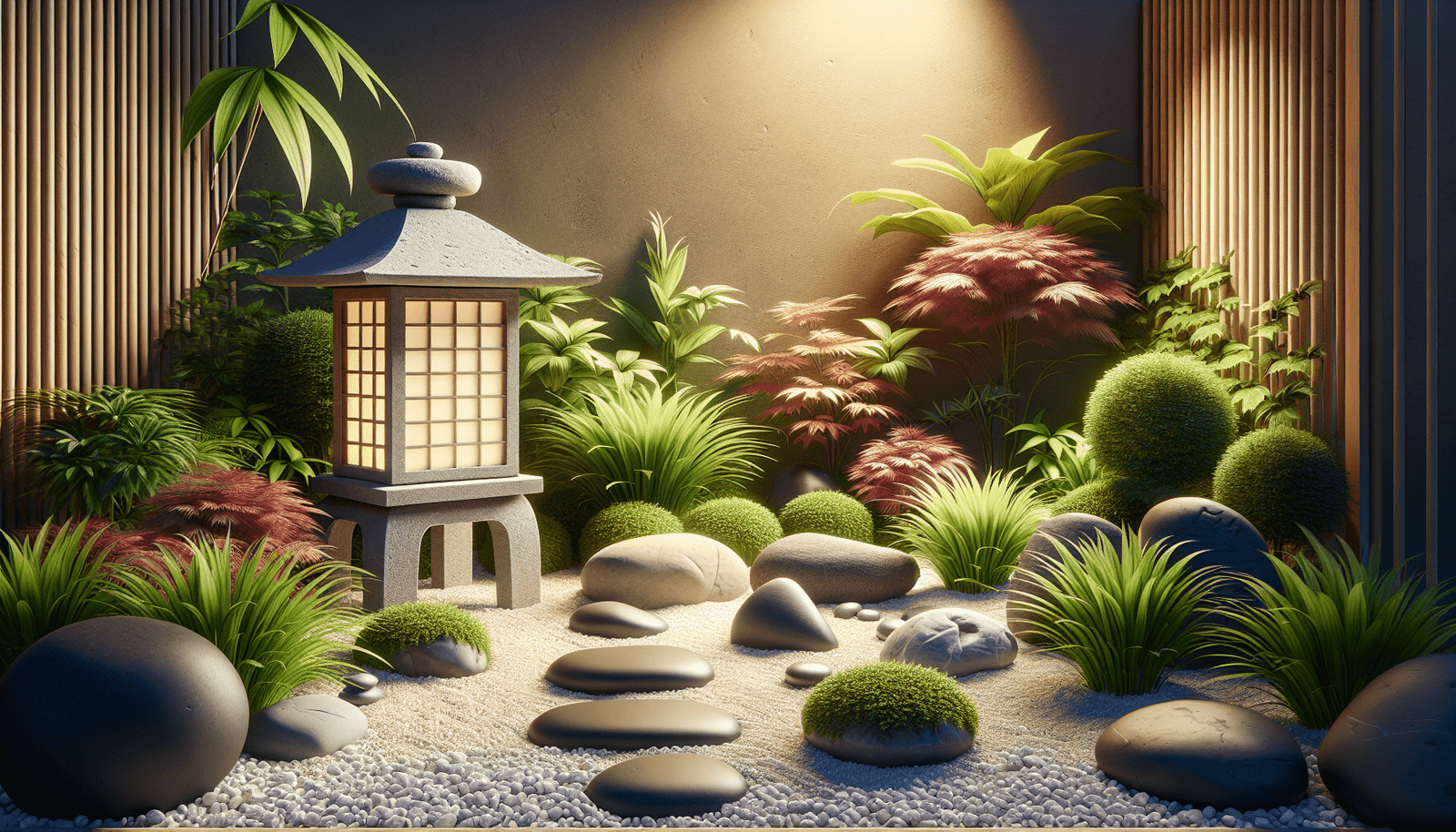Have you ever felt stressed or overwhelmed by the fast-paced world around you, craving a sense of peace and tranquility? One way to create a serene oasis in your own backyard is by designing a Japanese-inspired garden. In this article, you will learn how to nurture a sense of calm with a Japanese-inspired garden, incorporating key elements of Japanese garden design to bring balance and harmony to your outdoor space.
Understanding Japanese Garden Design
Japanese gardens are known for their unique design elements that aim to create a harmonious and tranquil environment. Traditional Japanese gardens are inspired by the natural world and strive to mimic the beauty of nature in a controlled and curated manner.
Simplified Beauty
Japanese garden design focuses on simplicity and minimalism, with an emphasis on natural elements such as rocks, water, plants, and gravel. Each element is carefully chosen and placed to create a sense of balance and harmony.
When designing your Japanese-inspired garden, think about incorporating simple yet elegant features that highlight the beauty of nature without overwhelming the space. Consider using a limited color palette of greens, browns, and whites to create a peaceful and cohesive look.
Key Elements of a Japanese-Inspired Garden
To create a truly authentic Japanese-inspired garden, it is important to incorporate key elements that are characteristic of traditional Japanese garden design. These elements help to evoke a sense of calm and tranquility, inviting you to relax and unwind in your outdoor sanctuary.
Zen Rock Garden
One of the most iconic features of Japanese gardens is the Zen rock garden, also known as Karesansui. This type of garden is characterized by carefully raked gravel or sand that represents water, with strategically placed rocks symbolizing islands or mountains.
Consider creating a Zen rock garden in a quiet corner of your yard, using a rake to create flowing patterns in the gravel. The simplicity of the design and the meditative process of raking the gravel can help you find a sense of peace and mindfulness in your garden.
Water Features
Water is an essential element in Japanese garden design, symbolizing purity and renewal. Incorporating a water feature such as a pond, stream, or waterfall can bring a sense of tranquility to your garden, and the sound of running water can create a soothing atmosphere.
If you have limited space, a small bamboo fountain or water basin can also add a touch of serenity to your Japanese-inspired garden. Consider placing water features strategically to create a focal point and enhance the overall ambiance of your outdoor space.
Japanese Plants and Trees
Plants play a key role in Japanese garden design, with a focus on creating a lush and harmonious landscape. Traditional Japanese plants such as cherry blossoms, Japanese maples, bamboo, and moss are popular choices for adding texture and color to your garden.
When selecting plants for your Japanese-inspired garden, choose varieties that thrive in your climate and soil conditions. Consider incorporating different shades of green and subtle pops of color to create a cohesive and visually appealing composition.

Creating Tranquil Pathways
Pathways are an important feature of Japanese gardens, guiding visitors through the space and encouraging a slow and mindful stroll. Traditionally, Japanese garden paths are made of stepping stones, gravel, or sand, with curves and turns that lead to different areas of the garden.
Consider creating a meandering pathway in your garden, using stepping stones or gravel to define the route. Add subtle lighting along the pathway to create a magical atmosphere in the evening, inviting you to take a peaceful evening stroll and enjoy the beauty of your garden under the moonlight.
Tea House or Meditation Space
In Japanese garden design, the tea house or meditation space is a place of quiet reflection and contemplation. Adding a small structure to your garden where you can sit and unwind can provide a peaceful retreat from the stresses of everyday life.
Consider creating a simple wooden structure or gazebo in your Japanese-inspired garden, surrounded by lush greenery and fragrant flowers. Decorate the space with comfortable seating, cushions, and lanterns to create a cozy and inviting atmosphere where you can relax and meditate in peace.
Maintenance and Care Tips
To keep your Japanese-inspired garden looking its best and thriving for years to come, it is important to establish a regular maintenance routine. Here are some tips to help you care for your garden and ensure that it remains a peaceful and tranquil retreat.
Pruning and Trimming
Regular pruning and trimming of plants and trees is essential to maintain the balance and harmony of your Japanese garden. Remove dead or overgrown branches, shape shrubs and trees, and thin out dense areas to allow for proper air circulation and sunlight.
Weed Control
Weeds can quickly overtake a garden and disrupt the beauty of your Japanese-inspired landscape. To keep weeds at bay, regularly inspect your garden for any unwanted growth and remove them by hand or with the help of a gardening tool.
Watering and Fertilizing
Proper watering and fertilizing are crucial to the health and vitality of your plants and trees. Be mindful of the specific needs of each plant species in your garden, and water them accordingly to prevent under or over-watering. Use a balanced fertilizer to provide essential nutrients and promote healthy growth.
Seasonal Care
Different seasons require different care routines for your Japanese garden. In the spring, focus on pruning, fertilizing, and planting new additions to your garden. In the summer, be diligent about watering and protecting your plants from the heat. In the fall, prepare your garden for the colder months by cleaning up debris and protecting delicate plants from frost.

Conclusion
Creating a Japanese-inspired garden is a wonderful way to nurture a sense of calm and tranquility in your outdoor space. By incorporating key elements of Japanese garden design, such as Zen rock gardens, water features, and lush plants, you can create a serene oasis that invites you to relax, unwind, and connect with nature.
Take the time to design and care for your Japanese-inspired garden, and let it become a peaceful sanctuary where you can escape the stresses of everyday life and find solace in the beauty of the natural world. Embrace the simplicity and elegance of Japanese garden design, and let your garden be a reflection of peace, harmony, and balance in your life.

